SMA Conference 2025 Programme of Talks
As the date of this year’s conference approaches, we thought we’d give you a little taster of the fascinating line-up of talks planned. This year’s programme spans continents and methodologies—from Swahili stone towns to Viking-Age trade networks, urban ecologies, castlescapes, and ecclesiastical memory. We bring together an international community of scholars to explore how medieval cities were built, inhabited, transformed, and remembered. Whether you are a seasoned researcher, early-career scholar, or curious newcomer, we look forward to welcoming you to #medarch2025. The conference will take place on the 13th and 14th September at the University of Leicester, with a keynote in the cathedral on the evening of Friday 12th. Registration for the conference is now open and you can sign up here.
The Friday evening keynote will be delivered by Stephanie Wynne-Jones (University of York) and is titled: Imagined Cities and Worlds Otherwise: Exploring Medieval Concepts of the Global. Then on Saturday we will be joined by Søren Sindbæk (Aarhus University) to deliver his keynote titled: Ten Years of Urban Archaeology with UrbNet: Methods and Exploring from Rome to Ribe. Complementing the keynotes is a bumper line-up of 24 talks covering a range of cutting edge research topics in medieval urban archaeology, most of which are detailed below. For the full programme, please see the booking link above.
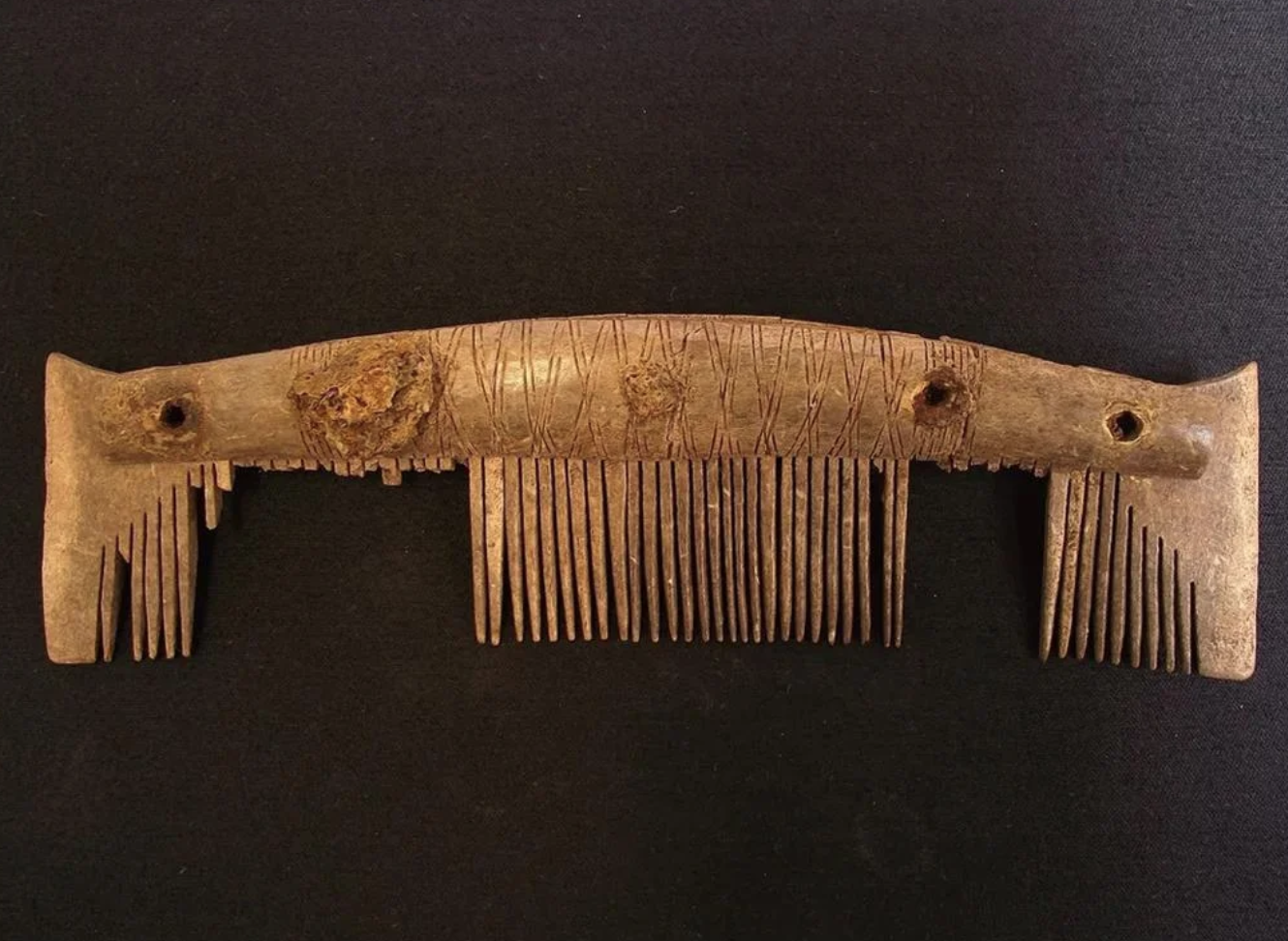
Early Medieval bone comb discovered during excavations at Ipswich. (Image: Suffolk County Council via archaeologymag.com).
Brandon Fathy: Vibrant Ipswich: New Perspectives on Urban Emergence in the Early Middle Ages
The presentation challenges traditional models of medieval urban development, suggesting towns didn’t simply “start” but gradually emerged through complex interactions between people, materials, and their environments. Focusing on early medieval Ipswich (c. 600–900), it uses ideas from new materialism to show how urbanisation was an evolving process, not a fixed state. It encourages a more flexible, relational view of how towns formed, rather than forcing them into rigid categories.
Ivo Stefan: Continuities and Discontinuities of Urban Lives in “Slavic” Central Europe in the 8th – 13th Centuries
During the 12th and 13th centuries, institutional towns—with shared legal and material characteristics—spread across Europe, though they developed around varied central features like markets, emporia, or military hubs. This paper zooms in on “Slavic” Central Europe, especially the modern Czech Republic, where archaeological digs have enriched our understanding of early urban formations (8th–12th century). It reviews key features of these settlements (like layout, fortifications), their continuities or breaks, and their social and functional significance.
John Lawson et al: Edinburgh’s First Burghers: New Scientific Research into Medieval Burials from St Giles Cathedral
To celebrate the 900th anniversaries of St Giles Cathedral and the City of Edinburgh, a new research project used DNA, isotope analysis, and facial reconstruction to examine medieval burials excavated near the cathedral. The study spans from the 12th-century foundation phase to later burials—including pilgrims and women interred at the Lady Chapel in the 15th/16th centuries. The findings offer rich insights into the lives of early Edinburgh inhabitants and will feed into a public exhibition at St Giles, helping to connect science with community heritage.
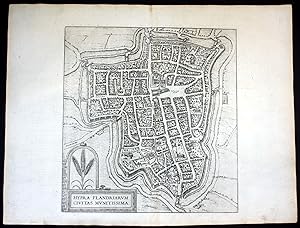
“Hypra Flandriarum” – Ypern Ieper Belgium Braun Hogenberg map Plan gravure engraving Franz Hogenberg and Georg Braun, 1575. (Image: via AbeBooks.fr).
Rachèl Spros et al: Urban Life in the Medieval Industrial City of Ypres
In the 12th–13th centuries, Ypres flourished due to its booming cloth trade, but its fortunes declined in the 13th–14th centuries due to conflict, famine, and disease. Because WWI destroyed many records, this study turns to isotope analysis of human and animal remains to uncover diet and mobility patterns. Findings show human movement and changing food imports, with access to animals differing inside and outside the city walls—likely influenced by sex and social status. Interestingly, signs of the 14th-century hardships didn’t show up in the isotopic data. The insights have broader value for understanding urban life in medieval northwestern Europe.
Lennert Lapeere: Living in the suburbs: Reconstructing the Outskirts of Late Medieval Ypres (Flanders, Belgium)
This paper explores late medieval Ypres, a thriving cloth-production hub whose suburbs stretched beyond city fortifications until their abandonment after the 1383 siege. Using GIS to integrate archaeological, historical, and cartographic data, the study reconstructs the city’s diverse suburban fabric. Focused on the Verdronken Weide area, it reveals shifting housing patterns and proposes new theories on craft, cloth production, and land use in these peripheral zones—offering key insights into the character of urban suburbia in late medieval Europe.
Blair Nolan: Regional Mobility and Survivorship in Medieval Lund, Sweden
Medieval Lund depended on migrant communities from its founding around 990 CE, with migrants serving as key figures like craftsmen, merchants, and clergy. While migration’s demographic role is well studied, its health impacts are less understood. Using strontium isotope analysis on tooth enamel from 200 individuals in the Trinitatis church cemetery, researchers compared locals and non-locals based on childhood diet. They paired this with Kaplan-Meier survival analysis, which showed no significant difference in survivorship between the two groups—suggesting that migrants in Lund experienced similar mortality conditions to locals.
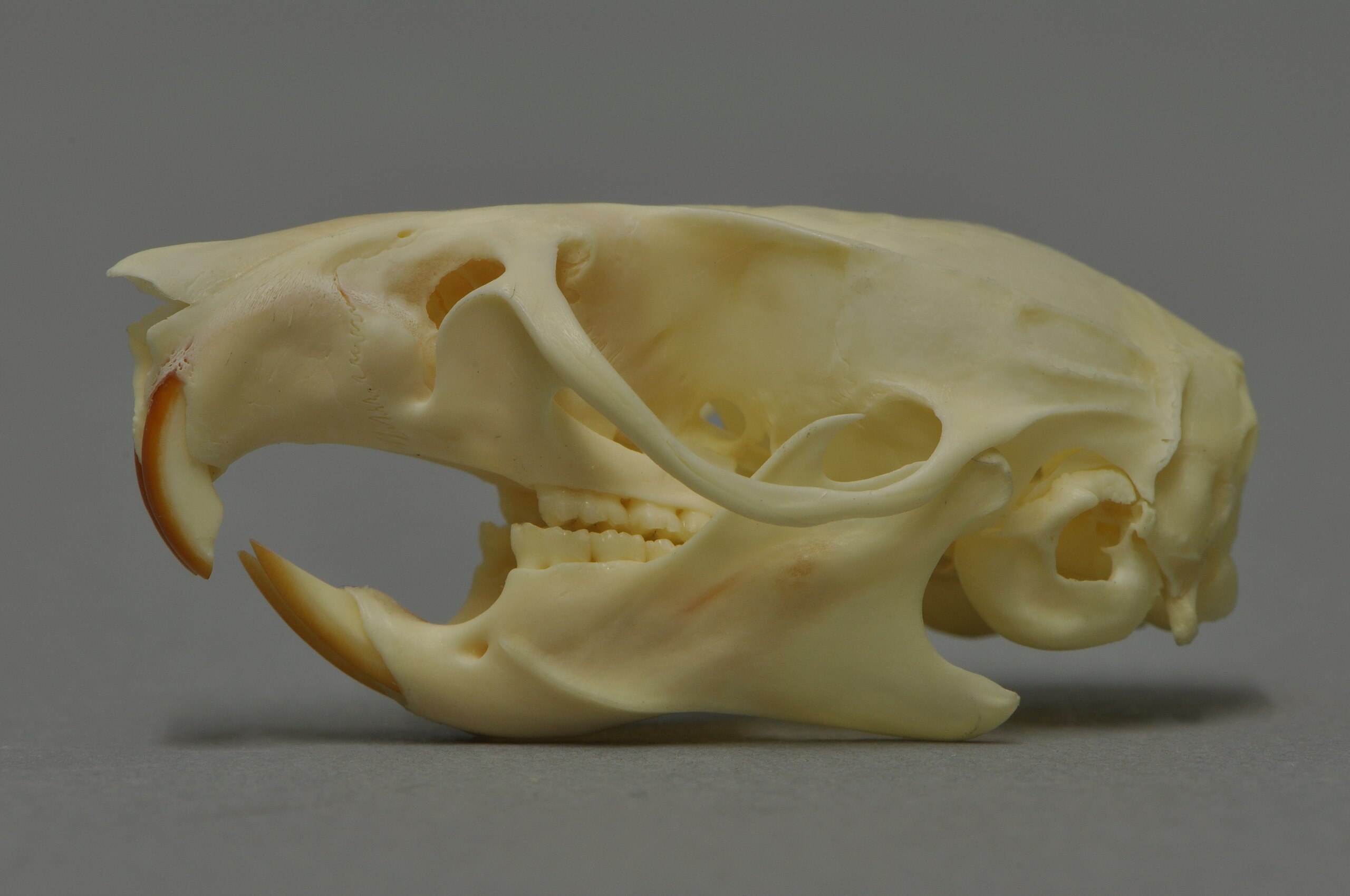
Rat skull from the collection of Museum Wiesbaden. (Image: Klaus Rassinger and Gerhard Cammerer, Museum Wiesbaden, via Wikimedia Commons CC BY-SA 3.0).
George Ellison: Rerunning the Rat Race: Assessing and Reconstructing the Settlement History of Viking-Age Towns through Micromammal Remains
This paper investigates the often-overlooked relationships between micromammals (like rats and mice) and the development of human settlements. Drawing on concepts such as island biogeography and Viking-Age urbanism, it analyzes micromammal data from across Europe to trace patterns of colonisation linked to trade, economy, and technology. Through detailed case studies and a new model correlating micromammal presence with urban growth and connectivity, the study offers fresh insights into settlement development—especially in Viking-Age contexts—and proposes new methods for interpreting lesser-known sites.
Rebecca Boyd: Women’s Work and Women’s Worlds in Ireland’s Viking-Age Towns
This paper critiques traditional interpretations of Viking-Age households in Ireland, which often assume a nuclear family model shaped by patriarchal and heteronormative biases. Building on intersectional approaches developed in Scandinavian research, it reconsiders how identity, agency, and personhood influence our understanding of household composition—particularly for women. By examining archaeological finds like personal items and labour-related artefacts, the study offers a more inclusive view of women’s roles within Viking-Age Ireland’s emerging urban landscapes.
Craig Cessford: Gender and the Archaeology of Later Medieval Cambridge
Cambridge has been a significant locus for developer funded archaeological investigations since 1990, predominantly undertaken by the Cambridge Archaeological Unit. It is also the principal focus of ‘After the Plague’, a research project focussing on later medieval skeletons involving a range of scientific techniques. One area of research where these new findings and methods have considerable potential is in the study of gender. This paper challenges binary gender views, proposing instead a spectrum of male and female identities. It identifies varied masculinities and femininities through skeletal and material evidence, drawing on case studies from a nunnery, friary, and hospital. The unique gendered transition of St Radegund’s Priory into Jesus College will also be examined. At its core, the paper asks whether medieval urban centres fostered broader expressions of gender identity.
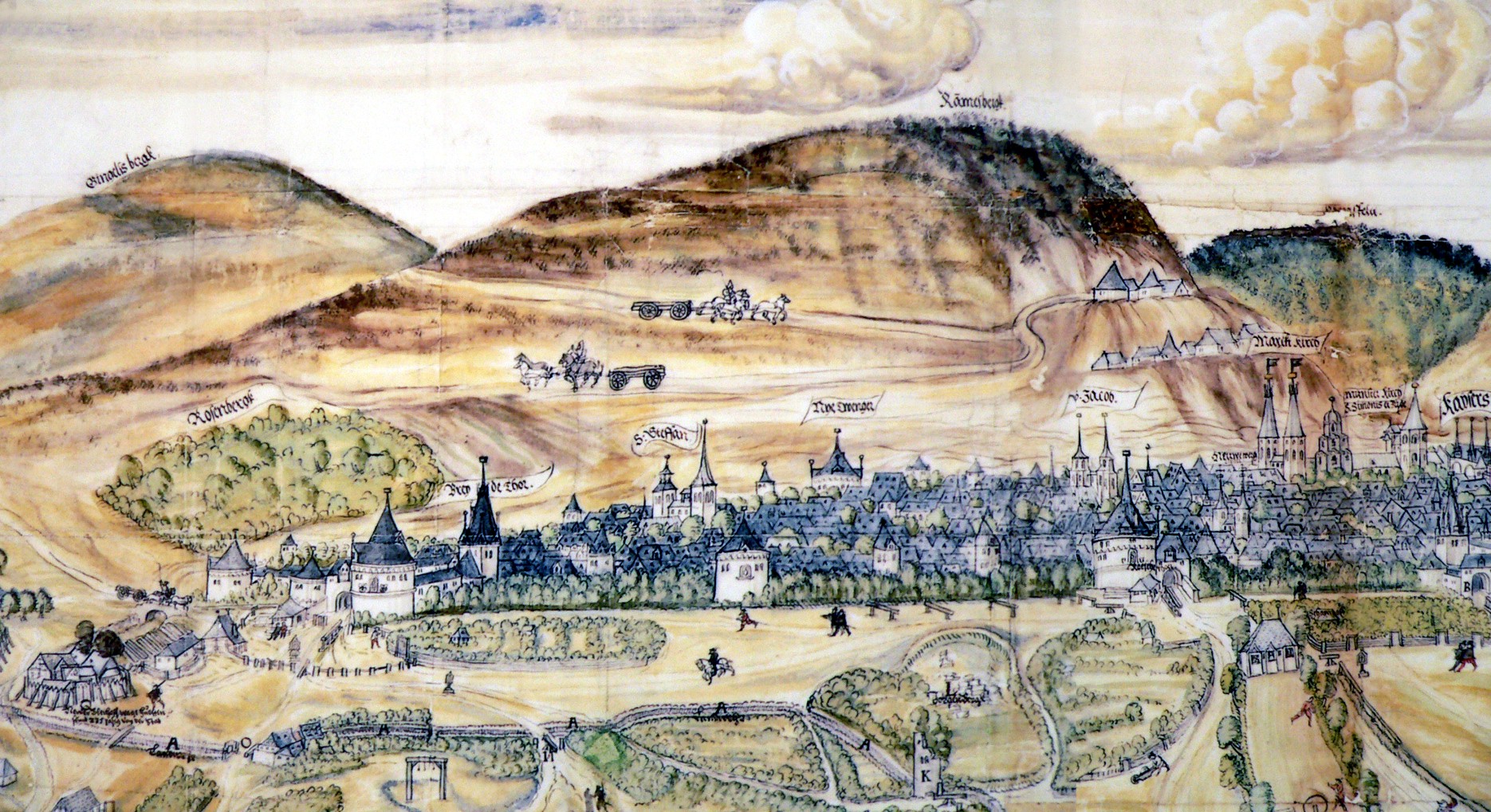
A 1574 depiction of the medieval city of Goslar with the mines of Rammelsberg in the background. (Image: Matz Sincken via Wikimedia Commons, Public Domain).
Paweł Cembrzyński: City of Stocks and Flows: Urban Ecology of a Medieval Mining Town
This paper applies urban ecology to medieval towns, treating them as dynamic systems where matter, energy, and wealth accumulate and flow. Social and environmental processes—like land use, culture, and institutions—regulate these flows and drive urban evolution. A case study of mining towns in Central Europe shows how cities expanded with resource wealth but declined when mining faltered, underscoring their ecological and economic dependencies. This approach merges archaeology with ecological theory to offer a broader, comparative lens for understanding urban transformation over time.
Luisa Radohs: Individual Lifestyles in Late Medieval Cities – Archaeological Studies on the Material Dimensions of Urban Plots
This paper introduces a new German research project aiming to shift focus from generalisations to the diversity of urban domestic life in the Late Middle Ages. While past studies often highlighted similarities across towns, this project zeroes in on individual households by analysing excavated plots in northern and southern German cities. Through this comparative, material-based approach, it hopes to paint a more nuanced, realistic picture of medieval city life and explore the methodological challenges that come with studying household-level variation.
Abby Antrobus & Alejandra Gutierrez: Excavations at Redcliff Quarter, Bristol (2016–18): Living and Working in a Medieval Suburb
This paper highlights excavations in Redcliff, a Bristol suburb founded in the 12th century, revealing detailed evidence of tenement life through structures, artefacts, ecofacts, and organic remains. It sheds light on cooking practices via lipid residues, and wider industrial activity—particularly early-stage animal skin processing, evidenced through faunal and beetle remains. The findings help fill gaps in Redcliff’s archaeological record and contribute fresh insight into the spatial and chronological organisation of urban industries outlined in Bristol’s Urban Archaeological Assessment.
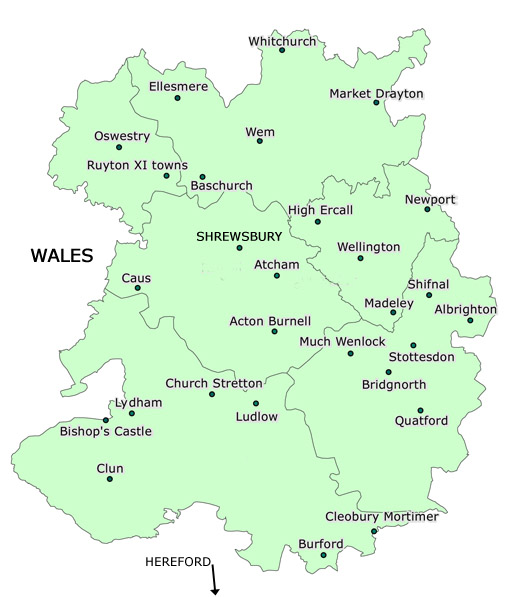
The medieval market towns of Shropshire. (Image: users.trytel.com).
Nigel Baker: Urban Shropshire: Growth and Contraction c.1100-1600
This paper reviews recent research into twenty-seven medieval towns in Shropshire, combining grey literature from archaeological fieldwork with historical scholarship. While urban expansion (c.1100–1300) is well documented, the internal timing and mechanisms of this growth are still debated. Evidence of urban contraction in the later period is increasingly apparent archaeologically, aided by precise dendrochronological dating—particularly in towns unaffected by early modern fires. The findings suggest highly localized patterns of decline and revival across Shropshire and the wider Marches.
Lars Morten Fuglevik: Imported Wares, Local Affairs: Pottery, Social Practices, and Urban Life in Medieval Oslo, Norway
This paper revisits medieval Oslo’s urban life through the study of imported pottery and new scientific methods like ICP-MA/ES spectrometry and GC-HRMS residue analysis. These techniques refine our understanding of trade, migration, and culinary habits, challenging past assumptions—particularly the overstated dominance of German and English wares, with southern Scandinavian ceramics proving more prominent. Spatial analysis highlights social distinctions, such as high levels of imported cooking pots in the shoemakers’ district, suggesting migrant communities. The residue analysis also hints at beeswax candle-making and possible cider production, expanding our view of medieval Oslo’s material culture and everyday life.
Wim de Clercq et al: The Urban Outport System of Medieval Bruges
This paper explores how a mid-12th-century natural event created the Zwin tidal channel, transforming Bruges into a key maritime hub linked to five specialized outport towns. Together, they formed one of late medieval Europe’s most urbanized coastal regions, which later declined due to environmental and political shifts. Drawing on interdisciplinary archaeological methods—like coring, geophysical surveys, and historical analysis—the research reconstructs the evolution and organization of this urban-maritime network, shedding light on the rise and fall of the Zwin system.
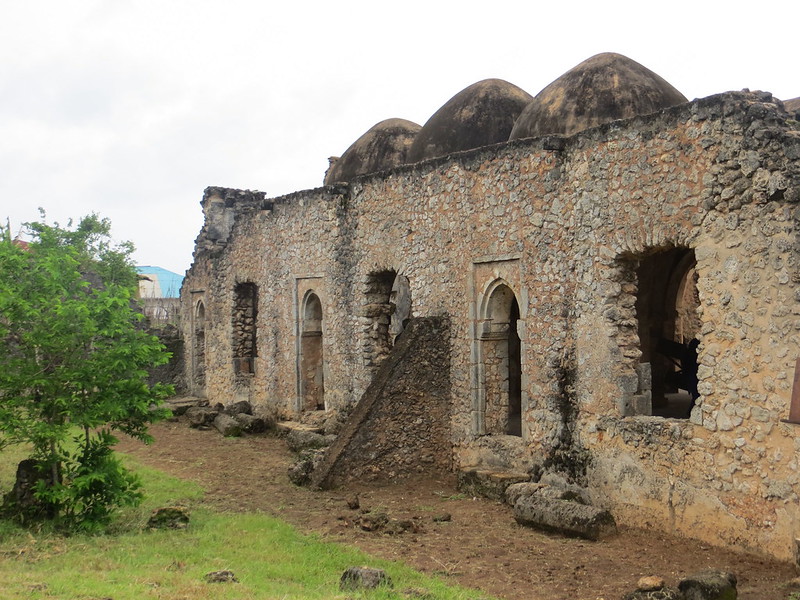
Ruins of the 9th century city of Kilwa Kisiwani, Tanzania, with coral stone architecture. (Image: Bureau of Educational & Cultural Affairs via Flickr CC BY-NC-ND 2.0).
Monika Baumanova: Constructing Permanence in East African Urban Landscapes
This paper explores Swahili stone houses—a hallmark of medieval East African coastal towns—built using fossilised coral and key to the region’s Islamic urban identity. It examines their distinctive layouts, aesthetics, and sensory experiences, comparing them with courtyard houses found across the Islamic world. Incorporating new ethnoarchaeological data and sensory archaeology, the study highlights architectural variation across sites and introduces European-based methodologies to the sub-Saharan context.
Caroline Bourne: Urban Creation or Adaptation? Reassessing the Early Development of Swansea
This paper investigates the early development of Swansea and its role in the urbanisation of the newly created lordship of Gower in the early 12th century. It revisits scholarly debates about Scandinavian influence—suggested by the name ‘Swein’s Eye’—and argues that a pre-existing Scandinavian trading presence made Swansea a strategically advantageous site for the caput. While urbanisation there supported colonial ambitions, similar efforts weren’t mirrored elsewhere in Gower. The study offers interdisciplinary insights into conquest through urban development in 12th-century Wales.
Paul Duffy: Dublin’s Scandinavian Churches – New Insights into the Lost Architecture of the City
Between AD 1000 and 1100, Dublin saw a dramatic surge in church construction, growing from no known churches to over twenty religious buildings—the highest concentration in Ireland at the time. Although none survive today, this paper draws on excavation findings, architectural fragments, and comparative analysis to reconstruct the character of these lost structures. It explores the cultural and cosmopolitan influences behind this ecclesiastical boom and challenges long-held assumptions about Ireland’s iconic medieval architecture.
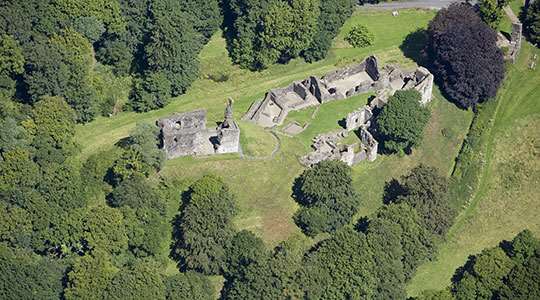
Aerial view of Okehampton castle, Devon. (Image (c) English Heritage).
Arthur Redmonds: Keeping Time: Castles, Temporalities and the Urban Taskscape
This paper reframes castle studies by examining the impact of castles on everyday life and community identity beyond their walls. Using Tim Ingold’s Taskscape concept, it analyses how castles—particularly in urban settings like Lewes and Okehampton—interacted with the daily rhythms, materials, and social practices around them. It argues that as medieval towns evolved, castles became embedded in new communal identities, though their influence eventually diminished as urban life reshaped social structures and temporalities.
Kirstine Haase: New Life to Old Data – Exploring Urban Deposit Models Using Voxel Modelling
This paper presents a case study from Odense, Denmark, highlighting how 150 years of archaeological and geotechnical data are being integrated into a voxel-based 3D deposit model. The model reconstructs the city’s historical landscape and stratigraphy, visualizes formation processes at specific sites, and enhances pre-excavation planning. It also improves communication with stakeholders and promotes public engagement—making long-overlooked data more accessible and impactful for urban heritage research.


